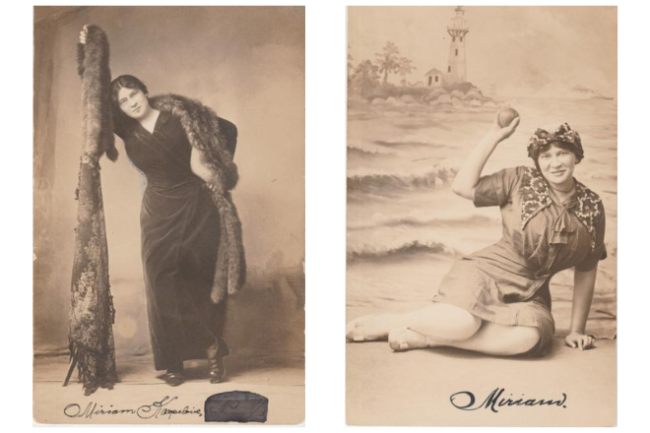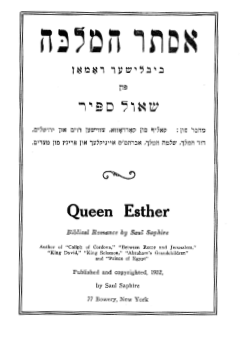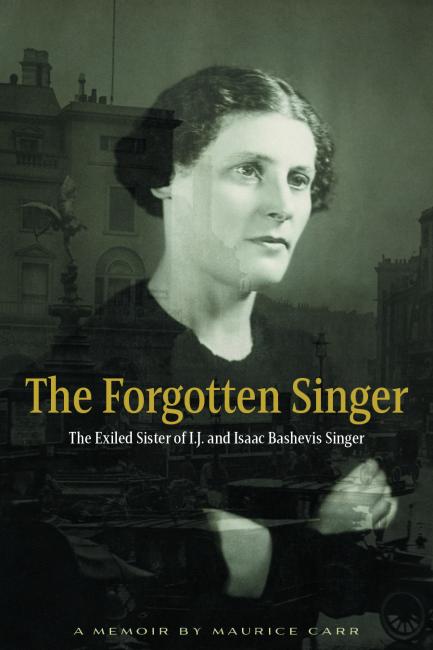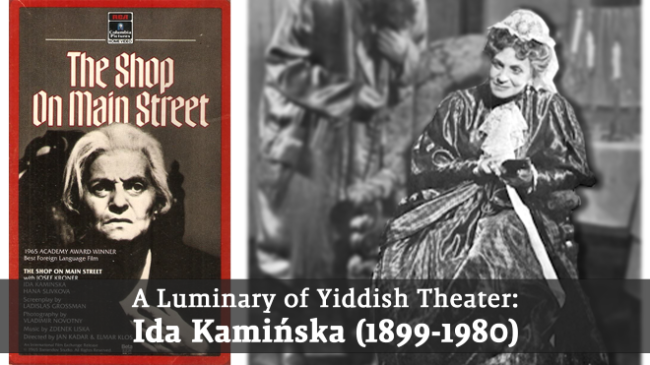The Weekly Reader: Women's History Month and Purim
Can Women’s History Month celebrate a woman who wasn’t, exactly, historical? I’m not one to decide that question, but it is a fact that Women’s History Month and the holiday of Purim (starting tomorrow night) are both in March, as they usually are. On Purim we celebrate the heroine Esther, who saved the Jews from the evil schemes of Haman. During Women’s History Month we celebrate “the vital role of women in American history.” Granted, that’s not exactly the same thing. But we can always take an opportunity to celebrate the women, real and legendary, who helped bring us to where we are. As the sages taught, the redemptions of Passover, Purim, and Hanukkah only came about “as a reward for the righteous women who lived in that generation.”
—Ezra Glinter
Photographic 'Retoucherin'

The writer and journalist Miriam Karpilove is now fairly well known to readers of Yiddish literature thanks to scholar Jessica Kirzane, who has championed Karpilove’s work. Here Kirzane introduces us to another side of Karpilove’s artistry: photography and photographic retouching. In her photos Karpilove displays her keen artistic eye as a retoucher, her flair and her joy at the art of photography—with her flirtatious, defiant self as subject. What these flattering, glamorous portraits fail to convey at first blush is the backstory of the labor that produced them and Karpilove’s own role as a worker in this turn-of-the-century industry.
Read about Miriam Karpilove’s photography on the Bronx Bohemians blog
Queen of the Page-Turner

Yiddish popular novels, which usually appeared serialized in newspapers, often took historical, or semihistorical, events as their subjects. And the story of Purim, with its inherent drama, was ripe for serialization. Here we have one example of a Purim novel, written in 1932 by the extremely prolific Saul Saphire, titled Queen Esther: A Biblical Novel.
Esther the Unappreciated

This particular Esther doesn’t have anything to do with Purim, but she’s worth celebrating nonetheless. Although less famous than her two brothers, Israel Joshua and Isaac Bashevis, Esther Kreitman (née Singer) was actually the oldest of the Singer siblings and had considerable influence on her two younger brothers. Despite the many obstacles she faced, and the fact that neither of her brothers were interested in her literary career, she eventually published several novels and short story collections, as well as translations into Yiddish. Keep an eye out as well for The Forgotten Singer: The Exiled Sister of I. J. and Isaac Bashevis Singer, forthcoming in June from the Center’s White Goat Press.
Read Esther Kreitman’s works in the Steven Spielberg Digital Yiddish Library
Watch an oral history interview with Esther Kreitman’s granddaughter, Hazel Carr
Esther Onstage

It’s no exaggeration to say that modern Yiddish theater came into being thanks to the age-old tradition of the purim-shpil, or Purim play. The Yiddish stage also had its share of Esthers, perhaps most famously Ester-Rokhl Kaminska, who became known as the mother of Yiddish theater. Her daughter, Ida Kaminska, also became a star of the Yiddish stage and eventually the artistic director of the Jewish State Theater of Poland. This short film from the Center’s Wexler Oral History Project draws on a trove of interviews to paint a picture of Ida Kaminska and her storied career.
